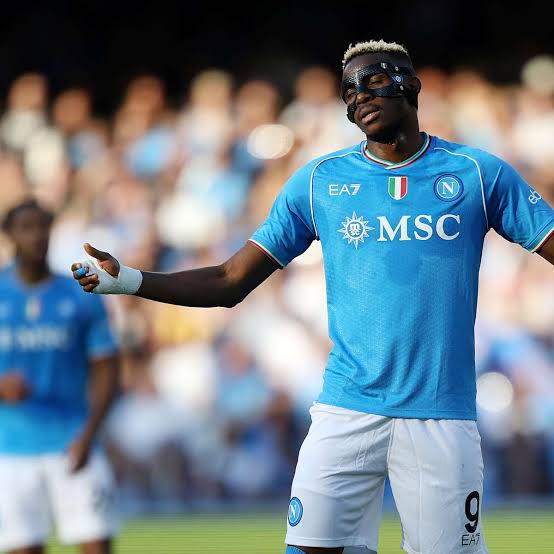Jaxson Dart is already showing signs of improvement….
Jaxson Dart has shown significant promise in his early years as a collegiate football player, and his growth on the field continues to spark optimism among coaches, teammates, and fans alike. After making the transition from one of the nation’s top high school quarterbacks to competing at the University of Mississippi (Ole Miss), Dart has continued to develop his skills, demonstrate leadership, and refine his approach to the game. His performance over time indicates that he is already showing signs of improvement, especially in areas like decision-making, accuracy, and poise under pressure.
Early Struggles and Transition to College Football
Dart’s freshman season at USC, before transferring to Ole Miss, was filled with learning opportunities. While he showed flashes of brilliance, his overall performance had its ups and downs, which is common for most first-year quarterbacks. The transition from high school to college football is never an easy one, and Dart had to adjust to the speed and complexity of the game. His raw talent was evident, but he struggled with consistency at times. During his stint at USC, Dart completed 30 of 48 passes for 1,353 yards and nine touchdowns, but also threw five interceptions in his limited appearances. This showed that, while the potential was there, his decision-making and ability to execute consistently needed refinement.
However, Dart’s decision to transfer to Ole Miss under the guidance of head coach Lane Kiffin proved to be a turning point in his career. Kiffin, known for his innovative offensive schemes, is the perfect coach to help young quarterbacks unlock their full potential. The dynamic nature of Kiffin’s offense, with its heavy reliance on fast-paced, high-scoring strategies, played to Dart’s strengths and provided the ideal environment for him to grow.
Progress in the Ole Miss Offense
In his first year at Ole Miss, Dart immediately had to step into a leadership role, particularly after former starting quarterback Matt Corral’s departure to the NFL. As the heir apparent to Corral’s position, Dart had big shoes to fill. Despite the pressure, Dart’s performances showed signs of maturity, and his decision-making improved as the season wore on.
One of Dart’s biggest areas of improvement in his first season at Ole Miss was his accuracy. Coming into college football, accuracy was one of the aspects of Dart’s game that was considered a work in progress. His sophomore season, however, demonstrated a marked improvement in his ability to hit targets with precision. His completion percentage went up significantly from his freshman year, which was an encouraging sign for his development.
Additionally, Dart displayed a greater understanding of the offense and its timing. Lane Kiffin’s system requires quick decisions, particularly on the deep ball, and Dart gradually adapted to the fast-paced nature of the offense. His confidence in reading defenses and making the right choices became more evident. The chemistry he built with his wide receivers and running backs was also noteworthy, particularly in the way he effectively distributed the ball to multiple playmakers.
Leadership and Poise Under Pressure
Aside from the technical aspects of his game, Dart’s leadership qualities have begun to shine through. At Ole Miss, he has quickly become a vocal leader on the field. His teammates have expressed admiration for his work ethic, determination, and ability to keep his composure even in high-pressure situations.
In games where Ole Miss was faced with adversity, Dart maintained a level-headed approach and never allowed himself to get rattled, a crucial trait for a quarterback. In several games, he was able to lead the team to comeback victories, which highlighted his ability to perform under duress. These moments demonstrated his poise, an essential quality that would only improve with more experience at the college level.
Moreover, Dart’s leadership extended beyond just his individual performance. He has developed strong relationships with his offensive line and skill players, which has helped create an offense that operates with greater cohesion. Understanding the nuances of leadership—especially the mental and emotional components—is just as important as physical ability, and Dart seems to be growing in that regard.
Refinement of Skills: The Mental Game
As a quarterback, much of Dart’s progress comes from his mental approach to the game. The speed of the game can overwhelm many young players, but Dart has shown the ability to slow things down. He no longer seems to rush decisions or hesitate when faced with the option to make a big play. Instead, Dart now appears to make decisions more efficiently, whether it’s recognizing pressure, identifying defensive coverages, or deciding when to take risks down the field.
Dart’s maturity as a quarterback can also be seen in his growth in reading defenses. One of the biggest leaps a quarterback can make in college football is improving their ability to read defenses in real-time. Early in his career, Dart occasionally made throws into coverage or threw under duress without fully processing the defense’s alignment. However, in his time at Ole Miss, Dart has become much more adept at recognizing blitzes, managing pocket presence, and making quicker decisions, all of which have elevated his game.
Physical Tools and Continued Potential
Along with his mental development, Dart’s physical tools remain a key part of his ability to succeed at the college level. He boasts a strong arm that allows him to make throws from various platforms. His mobility and ability to extend plays with his legs also make him a dual-threat quarterback, capable of evading pressure or taking off on the ground when necessary. These traits are significant assets in today’s college football landscape, and Dart’s natural ability to make plays with both his arm and legs gives him an edge.
While his mechanics have improved, there is still room for further development. Dart can continue refining his throwing motion and footwork to avoid bad habits, especially when under pressure or when attempting off-balance throws. Additionally, continued work on his deep-ball accuracy and touch passing will help him evolve as a complete quarterback.
Conclusion: A Bright Future Ahead
Jaxson Dart’s evolution as a quarterback has been promising, and his development in both mental and physical aspects of the game signals that he has the potential to become one of the top quarterbacks in college football. His progression in accuracy, decision-making, leadership, and poise under pressure marks significant improvement from his earlier years, and each game provides more evidence that he’s on the right track.
As Dart continues to grow and learn under the tutelage of Lane Kiffin, there’s no doubt that his skills will only improve with more experience and reps. With the foundation he’s building, Dart has the potential to lead Ole Miss to great success and perhaps one day make the jump to the NFL, where his physical and mental tools would be highly valued.



